Written by
John Kunz posted on November 13, 2016 12:28
My father was an avid Mountaineer. When we were children, he took us climbing in the Sierra Nevada’s and the Bavarian Alps. One of the coldest nights of my life was spent on Mount San Gorgonio, in August 1967. On these climbs we never wore any sort of protective equipment. No helmets, no harnesses, no safety lines. Climbing 1000’s of feet on the Alpspitz, “via ferrata” left an indelible impression on me. My father would say, “you just climb, let Daddy worry about you falling.” My mother’s head would have exploded if she knew what we were doing.
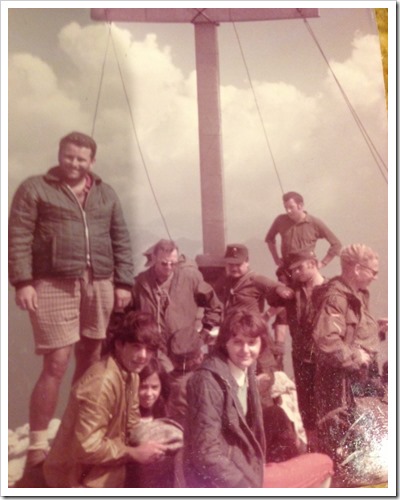
On top of the Alpspitze, in 1969: my Dad, me, my sister Betsy and our Cousin Margaret. |
Once I had sons of my own, I naturally wanted to introduce them to rock climbing. I used to take them to small rock faces near our camp on Oak Island and let them free climb. I would be the spotter and grab them if anything went wrong. Though this was a far cry from our experiences on the Alpspitze, it was a great way for the guys to get used to climbing and get a good core work out as well.
As the boys got older, we all realized that there are some truly amazing places to rock climb, in the Thousand Islands. Being far more conservative than my Dad, we equipped ourselves with helmets, harnesses, safety lines and high quality carabiners, before we began tackling some of the local climbs.
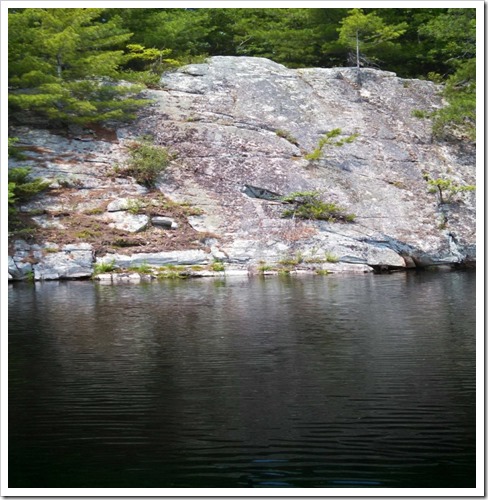
Crooked Creek, in Chippewa Bay, has a nice granite face. The tricky part of this climb is setting your anchor and then, where do you position yourself, to belay* the climber. [* Belay: To provide security to (a climber) by paying out or drawing in rope, often through a braking device, in readiness to break a potential fall.] |
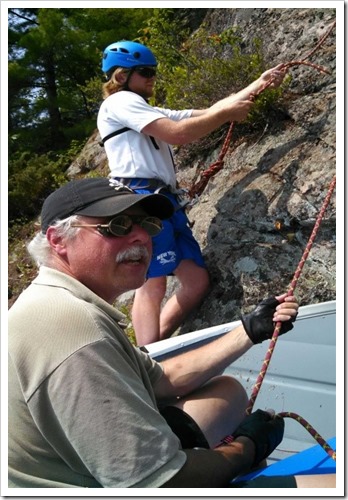
Turns out that a tin outboard works just fine. This climb was made challenging by quite a substantial cover of lichen. |
When picking places to climb, it is important to make sure that the surface is stable. We have seen huge sections of cliff, disappear into piles of rubble, between one season and the next. You want to look for a face that has tightly packed rocks, without a lot of loose junk. The next photo is a particularly good example of what to look for.
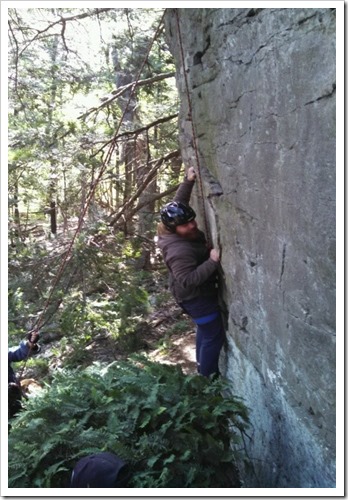 . . |
| Notice that there are some good hand and footholds but, very few loose or jagged rocks. This makes for a stable and safe climbing surface. |
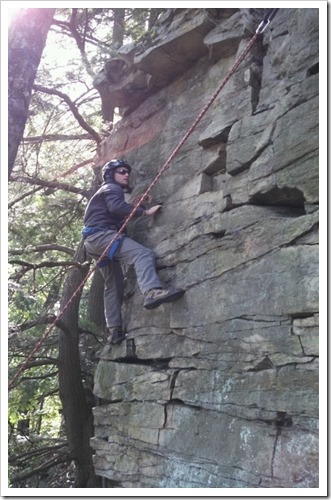 |
The game we play is “Touch the Biner”. The Climber needs to work his way back to the right and touch the anchor Carabiner,* before we belay them down. Climbing gives you a great core work out and makes you also use your brain. There are many routes that you can take on a climb; picking the one that is right for you is often the toughest part of the process.
[*Carabiner: is a specialized type of shackle, a metal loop with a spring-loaded gate, used to quickly and reversibly connect components, most notably in safety-critical systems.]
This is another nice face on Oak Island. It is quite a bit higher than the one previously shown. To the left of this face is an area that is not safe to climb. Notice the large gaps in the wall and the way the stones protrude out in an uneven fashion. These stones can easily become dislodged harming climber and belayer below.
There are quite a few other locations that we have yet to tackle. One notable climb, is the channel-side face on Ironsides Island. This looks like a real challenge; aside from very sketchy looking anchor points, you would need a calm day and no freighter traffic, as your belay boat would be pummeled otherwise. Permission would need to be granted by the Nature Conservancy who owns this property. The head of Wellesley Island has some interesting looking spots, as does Jones Creek, in the Canadian Sector, north of Singer Castle.
By John Kunz
John Kunz and his wife Kelly are summer residents of Chippewa Bay. They winter in Watertown, NY. Along with their three sons, they enjoy the River on a four season basis - Sailing, Rock Climbing and Skijoring. In February 2016, John took us Skijoring in the Thousand Islands. Read that article again, so you are ready for Winter 2017!